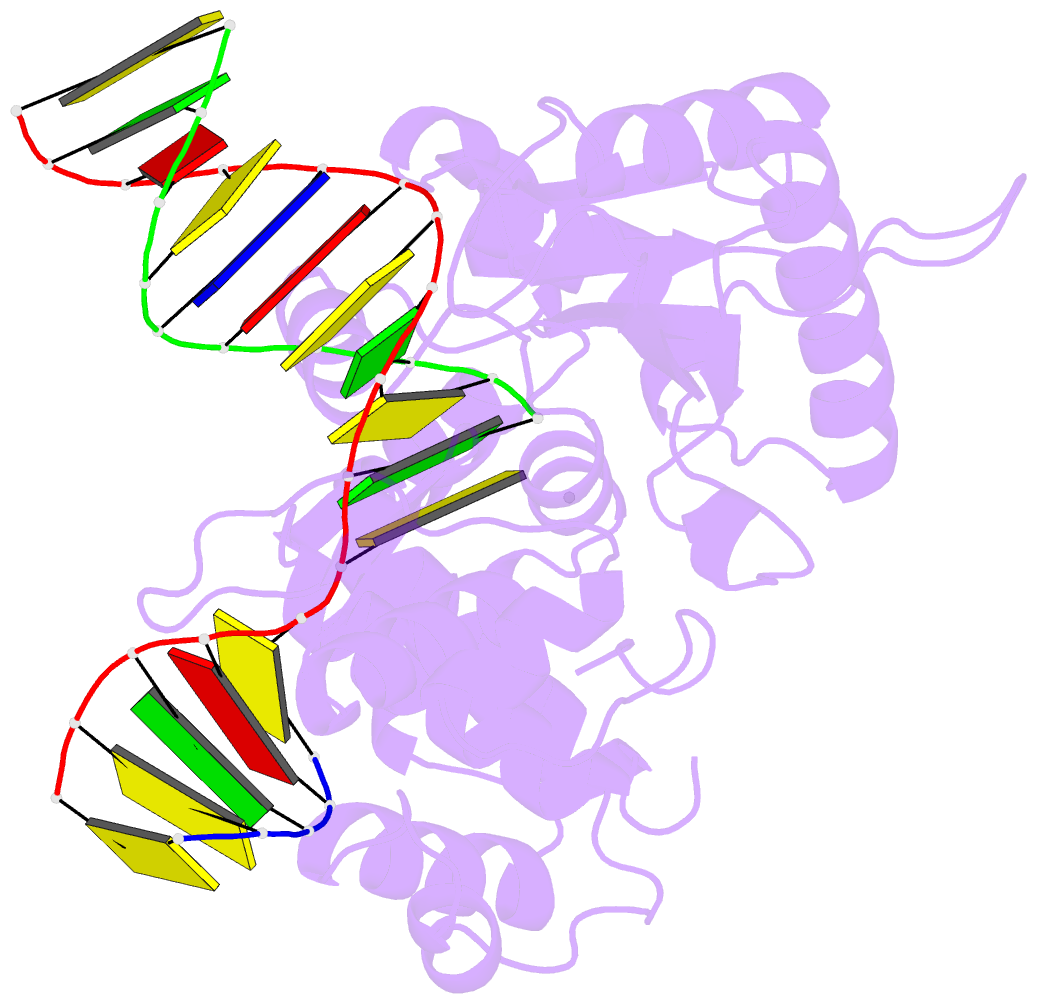Summary information and primary citation
- PDB-id
- 4dob; SNAP-derived features in text and JSON formats;
DNAproDB
- Class
- transferase-DNA
- Method
- X-ray (2.05 Å)
- Summary
- Ternary complex of DNA polymerase beta with a dideoxy terminated primer and 2'-deoxyguanosine 5'-beta, gamma-monochlororomethylene triphosphate: stereoselective binding of r-isomer
- Reference
- Wu Y, Zakharova VM, Kashemirov BA, Goodman MF, Batra VK, Wilson SH, McKenna CE (2012): "Beta,Gamma-CHF- and beta,gamma-CHCl-dGTP Diastereomers: Synthesis, Discrete (31)P NMR Signatures, and Absolute Configurations of New Stereochemical Probes for DNA Polymerases." J.Am.Chem.Soc., 134, 8734-8737. doi: 10.1021/ja300218x.
- Abstract
- Deoxynucleoside 5'-triphosphate analogues in which the β,γ-bridging oxygen has been replaced with a CXY group are useful chemical probes to investigate DNA polymerase catalytic and base-selection mechanisms. A limitation of such probes has been that conventional synthetic methods generate a mixture of diastereomers when the bridging carbon substitution is nonequivalent (X ≠ Y). We report here a general solution to this long-standing problem with four examples of β,γ-CXY dNTP diastereomers: (S)- and (R)-β,γ-CHCl-dGTP (12a-1/12a-2) and (S)- and (R)-β,γ-CHF-dGTP (12b-1/12b-2). Central to their preparation was conversion of the prochiral parent bisphosphonic acids to the P,C-dimorpholinamide derivatives 7 of their (R)-mandelic acid monoesters, which provided access to the individual diastereomers 7a-1, 7a-2, 7b-1, and 7b-2 by preparative HPLC. Selective acidic hydrolysis of the P-N bond then afforded "portal" diastereomers, which were readily coupled to morpholine-activated dGMP. Removal of the chiral auxiliary by H(2) (Pd/C) gave the four individual diastereomeric nucleotides 12, which were characterized by (31)P, (1)H, and (19)F NMR spectroscopy and by mass spectrometry. After treatment with Chelex-100 to remove traces of paramagnetic ions, at pH ~10 the diastereomer pairs 12a,b exhibit discrete P(α) and P(β)(31)P resonances. The more upfield P(α) and more downfield P(β) resonances (and also the more upfield (19)F NMR resonance in 12b) are assigned to the R configuration at the P(β)-CHX-P(γ) carbons on the basis of the absolute configurations of the individual diastereomers as determined from the X-ray crystallographic structures of their ternary complexes with DNA and polymerase β.





